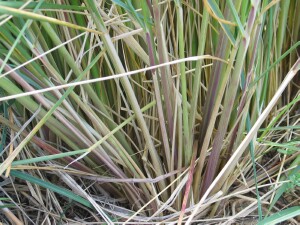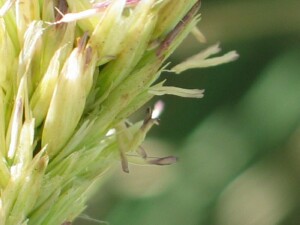Marram Grass
Back | Salinity Indicator Plants Home | Common name home | Scientific name home | Photo Gallery | Glossary
| Marram Grass photos | Family: Grass (Poaceae syn. Gramineae) |
| Scientific Name: | Ammophila arenaria | 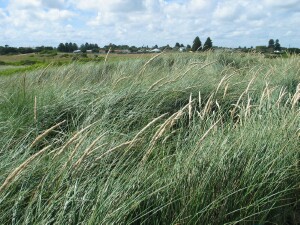 Dense stand of Marram Grass Photo: A J Brown |
Status: | Native to western Europe. Naturalised in all Australian States except Queensland and the Northern Territory. Also introduced into New Zealand, North America and South Africa. | |
Plant Description: | Long rhizomatous rooted and densely swarded, perennial grass with stems to 120 cm high. Leaf blades are tough and tightly inrolled to 70 cm long and 2.5 mm diameter. Leaves are smooth and hairless on the outside but ridged and pubescent on the inside. Flower-heads are dense, cylindrical spike-like contracted panicles, 8-25 cm long and 1-3 cm wide. Spikelets are 12-14 mm long and contain a single floret. | |
Habitat: | Dunes and sandy beaches along most of the coastline. | |
Comments: | Widely planted as a sand dune stabiliser but has replaced the native Hairy Spinifex (Spinifex sericeus) in many places. Tolerant and in fact stimulated by progressive sand burials, the plant’s dense growth habit and extensive rhizomatous root system entraps mobile sand and allows the building of dunes. Unfortunately, it has been shown that the steep-faced dunes formed by Marram Grass activity, at the expense of beach and near shore sand, leads to increased susceptibility to wave erosion and subsequent coastal recession. | |
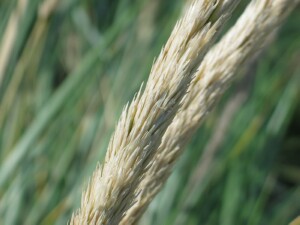 Flower-heads of Marram Grass Photo: A J Brown | 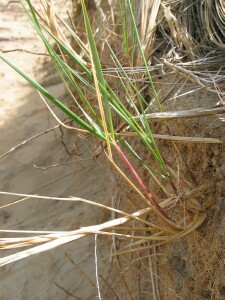 Rhizome and new shoots of Marram Grass Photo: A J Brown |
|
|

